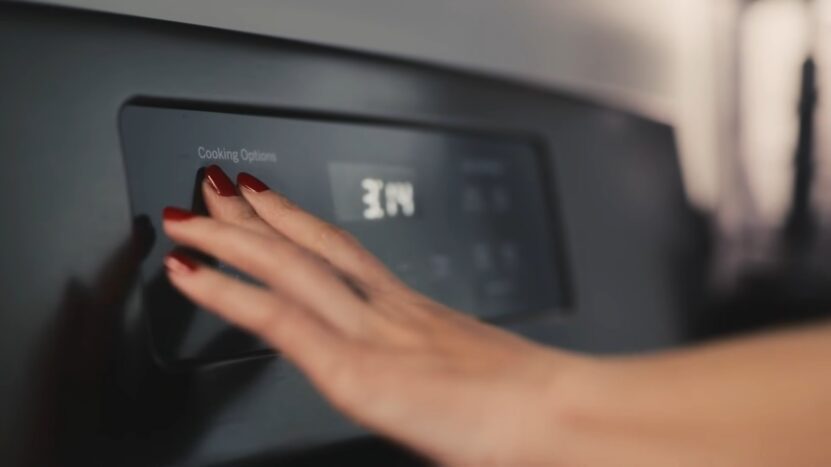As a seasoned restaurant chef, I’ve had my fair share of experiences with prime rib. This luxurious cut of beef, often referred to as the standing rib roast, is a favorite at both old-school and trendy restaurants.
But what happens when you have leftovers? How do you reheat prime rib without compromising its juicy, pink interior? Let’s dive in.
Prime rib is a fatty, marbled cut of beef that’s a staple in many upscale restaurants. Its rich flavor and tender texture make it a favorite for special occasions.
But reheating it can be tricky. The challenge is to warm it up without losing its signature rosy juiciness.
Expert Methods to Reheat Prime Rib

Before we get into the methods, remember that reheating prime rib is about more than just warming it up. We want to keep its unique taste and tenderness.
Prime rib has special fat patterns, or “marbling,” that make it juicy and flavorful. When reheating, it’s important to do it slowly to keep that juiciness.
If you heat it too quickly or too much, the fat can burn, and the meat can become dry. Now, let’s look at the best ways to reheat it.
Steam It Up

To begin with, we will examine the process of reheating prime rib using steam.
Tools You’ll Need
- Steamer basket (Alternatively, you can use a plate combined with tin foil or an aluminum pie plate)
- A pot
Steps to Reheat
- Pour a few tablespoons of water into your pot.
- Heat the pot until the water begins to simmer.
- While waiting for the water to simmer, wrap your slices of prime rib in foil to create a pouch.
- Once the water is simmering, place the foil pouch inside the steamer basket and set it over the pot.
- Cover the pot with its lid and allow the prime rib to steam for about 3-6 minutes.
- After the initial steaming, open the foil pouch carefully to check the warmth of the meat.
- If the prime rib isn’t adequately heated, seal the pouch again and continue steaming for a few more minutes.
- Once you achieve the desired warmth, promptly remove the prime rib from the steamer and transfer it to a serving dish. Enjoy your reheated prime rib!
Reheating Prime Rib in the Oven
Afterward, we will discuss the method of reheating the prime rib in the oven.
Tools You’ll Need
- Oven
- Baking pan
- Aluminum foil
Steps to Reheat
- Start by preheating your oven to 250°F.
- Lay the slices of prime rib in a baking pan.
- Pour a few tablespoons of broth (or water) over the slices to keep them moist.
- Tightly cover the baking pan with aluminum foil.
- Place the covered pan in the oven and let it warm for approximately 10 minutes.
- After reheating, promptly transfer the prime rib slices to a serving dish to prevent further cooking.
Quick Reheat in the Microwave

Though not highly recommended, this is the final available option.
Tools You’ll Need
- Microwave-safe bowl
- Lid for the bowl
Steps to Reheat

- Although not the top choice due to potential overcooking, the microwave method is quick and efficient for those short on time.
- Place your prime rib slices in the microwave-safe bowl.
- Add a few tablespoons of broth to the bowl to maintain the meat’s juiciness.
- Cover the bowl with its lid.
- Microwave on high for 1-2 minutes, keeping a close eye to avoid overcooking.
- Once done, immediately transfer the prime rib to a serving dish.
Cold Delight
Sometimes, cold prime rib can be a treat on its own. Thinly sliced cold prime rib can be a fantastic addition to sandwiches or salads.
Alternatively, you can chop up your leftover meat and incorporate it into breakfast hashes, cheesesteaks, or stir-fries.
Tips for Perfect Reheating
- Always ensure that the prime rib is reheated gently to retain its juiciness.
- Using broth instead of water can help in retaining the meat’s flavor.
- Always monitor the meat closely to prevent overcooking.
- If you’re unsure about the reheating method, always opt for the steaming or oven method.
FAQ
Why is reheating prime rib different from other meats?
Prime rib, also known as standing rib roast, is a tender, marbled cut of beef. Unlike other leftover meats like turkey or ham, prime rib requires special care during the reheating process to maintain its juiciness and flavor.
Why is prime rib considered a prized cut of beef?
Prime rib is a tender and marbled cut of beef, making it one of the most flavorful and sought-after cuts. Its rich taste and texture make it a favorite for many, especially on special occasions.
What side dishes pair well with prime rib?
Prime rib is often accompanied by a variety of side dishes. Some popular options include mashed potatoes, roasted vegetables, Yorkshire pudding, and salads.
Why is it essential to wrap the prime rib in aluminum foil during reheating?
Wrapping the prime rib in aluminum foil helps retain its moisture and prevents it from drying out during the reheating process. This ensures that the meat remains juicy and flavorful.
How can I ensure that my reheated prime rib is safe to eat?
Always use a meat thermometer to check the internal temperature of the reheated prime rib. The USDA recommends consuming reheated meat that has reached an internal temperature of 165°F.
Are there any other methods to reheat prime rib without compromising its flavor?
While the steamer and oven methods are highly recommended, some experts also suggest using a sous-vide method or a low-heat grill to reheat prime rib. However, regardless of the method, it’s crucial to ensure the meat doesn’t overcook and lose its natural juices.
Can I reuse the juices or broth from the original cooking for reheating?
Yes, using the leftover prime rib juices or broth during the reheating process can enhance the flavor and prevent the meat from drying out. It’s a great way to ensure the meat remains as tasty as when it was first cooked.
Last Words
Reheating prime rib doesn’t have to be a daunting task. With the right techniques, you can enjoy your leftover prime rib just as much as you did the first time around.
Remember, the key is gentle reheating to preserve the meat’s natural juiciness and flavor. So the next time you find yourself with leftover prime rib, you’ll know exactly what to do. Happy eating!
